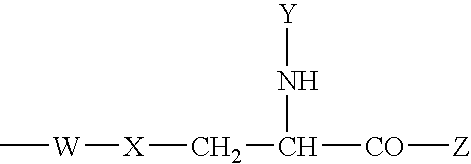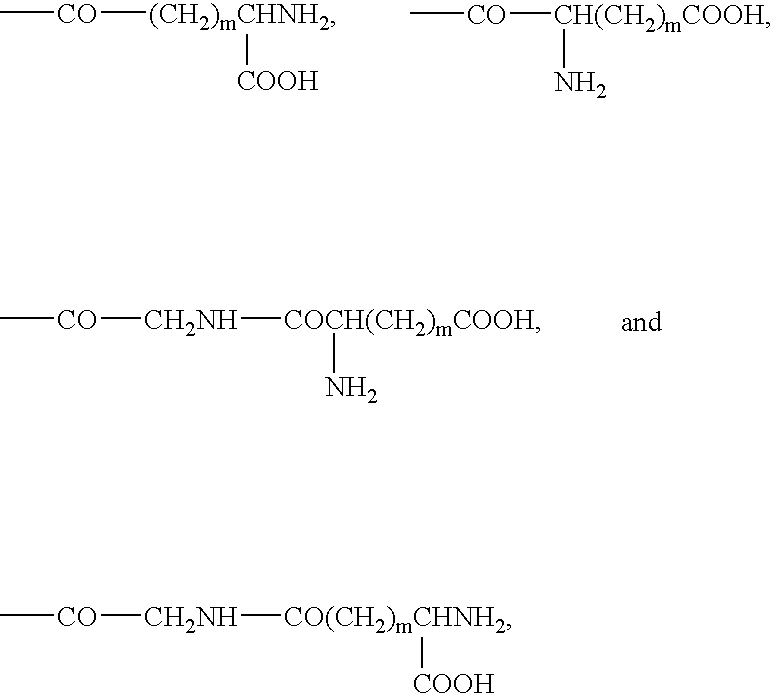Bivalent inhibitors of Glutathione-S-Transferases
a glutathione-s-transferase and inhibitor technology, applied in the field of bivalent molecules, can solve the problems of ineffective monovalent gst inhibitors, lack of potency, incompatible with practical therapeutic development, etc., and achieve the effects of reducing the number of monovalent inhibitors
- Summary
- Abstract
- Description
- Claims
- Application Information
AI Technical Summary
Benefits of technology
Problems solved by technology
Method used
Image
Examples
example 6.2.1
Preparation of dibromo alkyl esters (Molecular Linkers)
This Example illustrates the preparation of the representative series of molecular linkers:
Dibromo alkyl esters were prepared by the acid-catalyzed esterification of 8-bromooctanoic acid with a series of five ω-bromo alkyl alcohols (n=8, 9, 10, 11 and 12). In each of five pre-dried vials, 8-bromooctanoic acid (0.6 mmol, 133.8 mg) was dissolved in freshly distilled toluene. To each of these vials was added para-toluenesulfonic acid (0.05 mmol, 9.5 mg), followed by 0.5 mmol of one of the ω-bromo alcohols (or 2.5 mmol methanol). These solutions were refluxed for one hour with a Dean-Stark trap containing 4 Å molecular sieves to remove the water formed during the esterification. After this time, TLC (“thin-layer chromatography”; methylene chloride development, iodine stain) indicated no remaining 8-bromooctanoic acid (the limiting reagent). The solutions were allowed to cool, then washed sequentially with 5% aqueous sodium bica...
example 6.2.2
Preparation of the monobromo alkyl ester (Reference Linker)
This Example illustrates the preparation of the representative monofunctional reference linker of the dibromo alkyl ester series:
The representative monofunctional reference linker of the dibromo alkyl ester series was prepared by esterification of 8-bromooctanoic acid with methanol according to the procedure of Example 6.2.1.
example 6.2.3
Preparation of bis-ethanolisophthalate and bis-propanolisophthalate (Molecular Linkers)
This Example illustrates the preparation of the representative series of molecular linkers:
To prepare the isophthalate diols (n=2 and 3), isophthaloyl chloride was esterified to ethylene glycol or 1,3-propanediol. Due to the two equivalent reactive groups of isophthaloyl chloride and the diols, large excesses of the diols were necessary to prevent formation of polymeric species. Ethylene glycol and 1,3-propanediol (4 mL, about 60 mmol) were placed in two separate pre-dried vials. Isophthaloyl chloride (0.5 mmol, 101.5 mg) was placed in each of two separate pre-dried vials and dissolved in 1 mL of dry, freshly distilled THF (“tetrahydrofuran”). Using a dry syringe, the isophthaloyl chloride solution was added dropwise to each diol with vigorous stirring. Stirring was continued for 12 hours, at which time TLC (ethyl acetate development, UV visualization) indicated no remaining isophthaloyl chlo...
PUM
| Property | Measurement | Unit |
|---|---|---|
| Molar density | aaaaa | aaaaa |
| Structure | aaaaa | aaaaa |
| Length | aaaaa | aaaaa |
Abstract
Description
Claims
Application Information
 Login to View More
Login to View More - R&D
- Intellectual Property
- Life Sciences
- Materials
- Tech Scout
- Unparalleled Data Quality
- Higher Quality Content
- 60% Fewer Hallucinations
Browse by: Latest US Patents, China's latest patents, Technical Efficacy Thesaurus, Application Domain, Technology Topic, Popular Technical Reports.
© 2025 PatSnap. All rights reserved.Legal|Privacy policy|Modern Slavery Act Transparency Statement|Sitemap|About US| Contact US: help@patsnap.com



